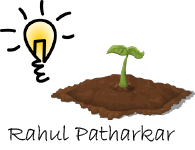Pathogen-trigger abscission
Plants can shed parts of themselves infected with disease. This way they can cast off parts like leaves before the infection spreads to other healthy parts of the plant. Lucky for plants, they can always grow new leaves. Some of what we know about pathogen-triggered leaf abscission is summarized below.
Drought-triggered abscission
Plants also shed organs such as leaves when water supply is limited. Perhaps you have observed this phenomenon in the middle of a hot dry summer. Each leaf transpires water. Shedding leaves during drought helps plants survive by cutting water usage until water becomes available again. Our understanding of drought-triggered abscission in summarized below.

Molecular mechanisms regulating abscission (shedding of plant parts).
A complex regulatory network regulates abscission. Key components we know about are shown below. Steadily, research is yielding more details how abscission is regulated. Ultimately, this network triggers increased cell wall modifying enzyme activity, abscission zone cell enlargement, and finally cell separation. Long term, we hope to manipulate this signaling network to bend abscission in favorable directions for agriculture.


